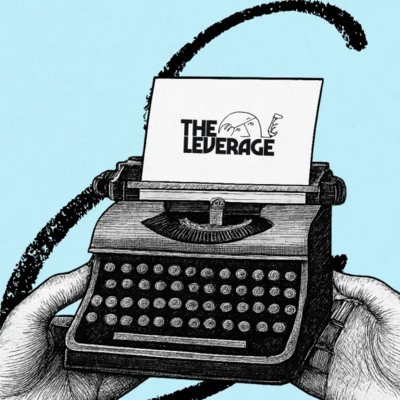
Sponsored By: AE Studio
This essay is brought to you by AE Studio, your go-to partner for custom-built AI-powered software. Transform your idea into reality faster than ever before, with bespoke MVPs designed especially for you.
TL;DR
- The internet is still underrated and only has <70% global usage
- The internet is mature enough, however, that we can begin to see its long-term impact
- The most important thing to know is that the internet is far weirder and more bizarre than we could’ve predicted
- Companies can take on much more ambitious missions while collapsing jobs, hiring one person where they would have hired two, and departments merging in ways totally impossible ten years ago
- Industries that many expected to wither at the advent of the internet, like books and bookstores, are thriving
- AI is the culmination of thirty years of the commercial internet
- All of this change is terrifying and exciting. Founders and operators have the latitude to wildly experiment and reinvent in ways that were never before possible.
The internet is a seething mass of humanity: all of our knowledge and stupidity and joy and hatred shoved into pixels. Our early oracles predicted that the internet would become a digital savior—it would spread democracy and science throughout the world. That, well, that was wrong. What it did instead was spread us, in our excess and folly, everywhere, instantly.
It is tempting to dismiss the internet as yesterday’s revolution. Surely, after 30 years of pop-ups and porn, we would’ve figured it out. The opposite is true. We haven’t even gotten everyone online yet.
In 2022, only 64.4% of the world had internet access. Of the planet's roughly 8B total residents, only 5.16B are online. In the U.S., the country where the internet browser was invented, we have plateaued at 93% internet usage. In countries earlier in the technology journey, the difference is stark: Kenya is sitting at 32%.
Millions of miles of fiber optic cables, 4,500 Starlink satellites careening through the sky, a mountain of hardware, and all the infrastructure we’ve been building since 1993, are just support beams for this mysterious thing.
We are now at a point of sufficient internet development to understand what the real implications of it will be. It won't be utopia. It won’t be hell. Instead, it’ll be society evolved.
We thought we could neatly package up the best of humanity and then copy/paste it into the online format. However, by digitizing all information, we changed the materiality of anything the internet touched. When you throw something online, whether it is as simple as a blog post or as complex as an entire organization, you alter what it can do and be.
These are all very abstract, hand-wavy ideas. What I’m guessing you are interested in is pragmatic application.
How has the internet changed us? In the 90s the answer to this question was, as I mentioned, the responsibility of philosophers. Now, we have enough examples and data to make this question the work of practitioners.
To understand why these changes are occurring, we need to grok the fundamental force at the heart of the internet: reduced distribution costs.
Digital Rails
The internet is a digital railroad network that transports information. And if we have been building “digital rails,” then maybe the impact of our physical rail network has something to teach us.
The total track miles for the US system topped off in 1916 after 100 years of blasting through the Rockies and clear cutting through northern timber. But even as the network collapsed, the revenue per mile skyrocketed. In 1916, the inflation adjusted revenue per mile was $307K compared to the $823K of 2014. A cool way to make money, but only relevant if you happen to be a choo choo enthusiast.
The more meaningful change was what happened to society. An extensive rail network dramatically reduced distribution costs. That is a bit of a trite sentence but reduced costs really matter.
Reduced distribution cost makes new industries possible. One of the fastest ways to improve society is to make yesterday’s luxury into today’s commodity. The only way that happens is by decreasing cost. The railroad network did just that for essentially every physical good in America.
To help visualize the impact this expanded railroad network had, let’s examine the ice trade. This industry would cut out blocks of ice from ponds and lakes in the North and then ship that ice throughout the U.S. Before rails, it mostly relied on barges and wagons.
The Only Subscription
You Need to
Stay at the
Edge of AI
The essential toolkit for those shaping the future
"This might be the best value you
can get from an AI subscription."
- Jay S.
Join 100,000+ leaders, builders, and innovators

Email address
Already have an account? Sign in
What is included in a subscription?
Daily insights from AI pioneers + early access to powerful AI tools










Comments
Don't have an account? Sign up!
Article ignores pretty much all of the writing on digital culture by the humanities
@markajansen interesting! tell us more. what should we be reading?